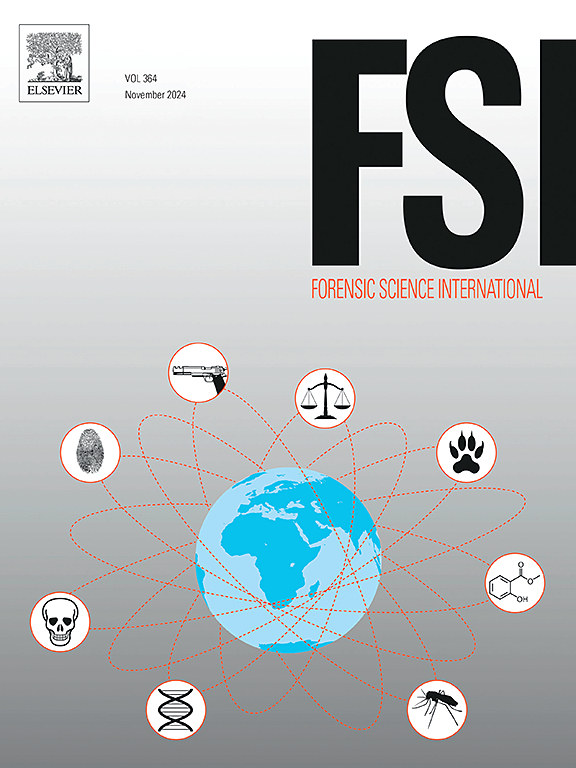法医相关物品上的潜伏 DNA 检测
IF 2.2
3区 医学
Q1 MEDICINE, LEGAL
引用次数: 0
摘要
本文综述了利用DNA结合染料检测和记录潜在DNA在法医相关物品上的存在。潜在的DNA在法医调查中是至关重要的,除非采用增强方法,否则它是不可见的。潜伏DNA通过各种转移方式沉积在与法医相关的物品上,皮肤与物品之间的直接接触是最常见的。皮肤细胞,也被称为死角质细胞或角质细胞,已被证明含有高度可变的DNA量。目前还没有针对皮肤细胞的标准推定测试,但dna结合染料的出现首次允许记录染色角质细胞的存在和数量。一种常用的DNA结合染料是Diamond™核酸染料(DD)。该染料已被用于检测潜伏DNA的生物沉积物在一系列底物的存在,并已被用于评估脱落状态。这篇综述讨论了用染料染色底物来检测潜在DNA的许多潜在好处,然后能够只在有细胞物质存在的地方收集样本。尽管有优势,使用染料检测细胞材料尚未过渡到法医科学实践;讨论了其原因,包括基材染色的一些问题。该综述最后强调了开展监测细胞沉积、持久性和转移的研究的机会。本文章由计算机程序翻译,如有差异,请以英文原文为准。
Latent DNA detection on items of forensic relevance
This review focusses on the use of DNA binding dyes to detect and record the presence of latent DNA on items of forensic relevance. Latent DNA can be crucial in forensic investigations and remains invisible unless an enhancement method is applied. Latent DNA is deposited on items of forensic relevance through various modes of transfer, with direct contact between skin and the item being the most common. Skin cells, otherwise called dead keratinocytes or corneocytes, have been shown to contain highly variable amounts of DNA. There is no standardised presumptive test for skin cells, but the advent of DNA-binding dyes allowed for the first time, the presence and number of stained corneocytes to be recorded. A commonly used DNA binding dye is Diamond™ Nucleic Acid Dye (DD). The dye has been used to detect the presence of latent DNA within biological deposits on a range of substrates and has been used to assess shedder status. This review discusses the many potential benefits of staining a substrate with a dye to detect latent DNA and then being able to target collection of a sample only where there is cellular material present. Despite advantages, the use of dyes to detect cellular material has not transitioned into forensic science practice; the reasons for this are discussed including some of the problems of dye staining of substrates. The review concludes by highlighting opportunities for conducting research to monitor cell deposition, persistence and transfer.
求助全文
通过发布文献求助,成功后即可免费获取论文全文。
去求助
来源期刊

Forensic science international
医学-医学:法
CiteScore
5.00
自引率
9.10%
发文量
285
审稿时长
49 days
期刊介绍:
Forensic Science International is the flagship journal in the prestigious Forensic Science International family, publishing the most innovative, cutting-edge, and influential contributions across the forensic sciences. Fields include: forensic pathology and histochemistry, chemistry, biochemistry and toxicology, biology, serology, odontology, psychiatry, anthropology, digital forensics, the physical sciences, firearms, and document examination, as well as investigations of value to public health in its broadest sense, and the important marginal area where science and medicine interact with the law.
The journal publishes:
Case Reports
Commentaries
Letters to the Editor
Original Research Papers (Regular Papers)
Rapid Communications
Review Articles
Technical Notes.
 求助内容:
求助内容: 应助结果提醒方式:
应助结果提醒方式:


